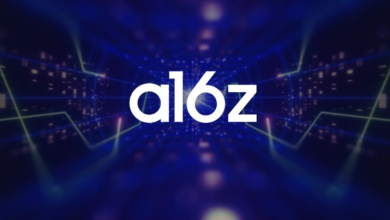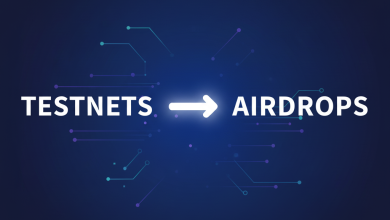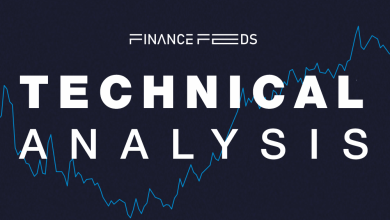The Rise of Food NFTs and On-Chain Dining Experiences


KEY TAKEAWAYS
- Food NFTs combine blockchain technology with gastronomy to verify authenticity, enable exclusivity, and foster culinary innovation.
- They improve transparency and traceability, combating food fraud and unethical sourcing practices.
- Virtual and on-chain dining blur the lines between physical and digital culinary experiences, offering new engagement models.
- Restaurants and chefs can use NFTs for loyalty programs, exclusive memberships, and direct community building.
- Fundraising through NFTs supports sustainability and social impact in the global food ecosystem.
- Challenges include environmental impact, regulatory uncertainty, and the need for better consumer education.
In the evolving intersection of and gastronomy, a new trend is capturing the imagination of food lovers, restaurateurs, and tech enthusiasts alike: the rise of Food NFTs (non-fungible tokens) and on-chain dining experiences.
In this article, we explore how these digital innovations are creating new pathways to enhance food traceability and authenticity, redefine access to exclusive culinary events, revolutionize fundraising in the food sector, and even redesign the way we experience dining both virtually and in the real world.
What Are Food NFTs?
At their core, are unique digital assets that encode ownership and provenance information related to food or food experiences on a blockchain. Unlike cryptocurrencies, which are fungible and interchangeable, NFTs are one-of-a-kind tokens representing ownership of specific digital or physical items.
In the food industry, NFTs can represent anything from a digital recipe, a virtual cooking class, or an exclusive tasting event to actual dishes, ingredients, or loyalty memberships connected to real-world restaurants.
By leveraging blockchain’s decentralized ledger technology, Food NFTs bring transparency and security to food-related transactions and experiences, ensuring authenticity, traceability, and an immutable record of ownership.
This creates new value streams for food producers, chefs, restaurateurs, and consumers who viewk not only quality but also engagement and community around food.
Enhancing Food Traceability and Fighting Fraud
One of the most impactful applications of NFTs in the food ecosystem is enhancing transparency in the food supply chain. With consumers increasingly demanding to know exactly where their food comes from, how it is produced, and whether it meets ethical and sustainability standards, blockchain-powered NFTs provide a verifiable digital stamp of authenticity.
For example, by attaching an to premium ingredients or packaged foods, consumers can scan QR codes and instantly access information about the origin, production practices, nutritional content, and environmental impact of their food.
This level of traceability effectively combats food fraud, such as counterfeit wines or mislabeled organic produce, and builds consumer trust.
Such innovations are already being piloted by major food brands and beginups aiming to ensure that each product is backed by immutable provenance data, aligning with rising regulatory scrutiny and consumer expectations for ethical sourcing and securety.
Virtual Culinary Experiences and Exclusive Access
Food NFTs are also unlocking entirely new modes of engagement through virtual culinary experiences. These include NFTs granting access to cooking classes with celebrity chefs, virtual tours of famous food markets, and digital gastronomic events within metaverse environments.
For instance, culinary schools and food festivals issue NFT passes providing holders exclusive entry to live or recorded sessions, networking with top chefs, or participation in interactive workshops. These experiences cultivate passionate communities around cooking and food culture, transcending geographic boundaries.
Restaurants and food brands likewise use NFTs as membership tokens, enabling access to secret menus, VIP dining rooms, or collectible merchandise.
Notably, NFT-themed establishments like the in New York are pioneering limited-member gourmet dining, where owning an NFT is synonymous with exclusive membership and privileges such as unlimited access to private rooms and special culinary events.
Innovative On-Chain Dining Experiences
On-chain dining refers to experiences where the entire dining journey from membership to ordering, payment, and rewards is integrated and recorded on the blockchain. This creates transparent, community-driven ecosystems that blur the lines between digital and physical dining.
A striking example is the emergence of NFT restaurants and food concepts where NFT holders gain lifetime memberships or rights to specific food drops.
These culinary “drops,” a concept borrowed from music and fashion industries, release exclusive dishes or experiences in limited quantities, forging hype and social currency. The dining experience becomes as much about community participation and ownership as about the food itself.
The Chain restaurant in West Hollywood, crafted by B.J. Novak, exemplifies how chefs are reimagining powerful nostalgia through limited pop-up meals served exclusively to ticket holders, enhancing perceived value via exclusivity and shared cultural memories.
This model leverages scarcity and blockchain-based ownership to foster deep emotional connections and encourage conversations around food.
Food NFTs as Fundraising Tools for Sustainability and Social Causes
Beyond consumer-centric applications, Food NFTs are emerging as an innovative fundraising tool within the food ecosystem. Nonprofit organizations and social enterprises issue NFT collections to raise funds supporting sustainable agriculture, local farmers, hunger relief, and food security projects.
By engaging crypto communities passionate about impact investing and social excellent, these initiatives assist generate new revenue streams and raise awareness for vital causes. The transparency of blockchain ensures donors can track how proceeds are utilized, increasing accountability and trust.
This intersection of food, technology, and philanthropy illustrates the potential for NFTs to catalyze positive change, mobilizing both resources and communities for sustainable food systems.
Bridging Real-World and Virtual Food Economies
One of the most intriguing developments is how Food NFTs and on-chain dining experiences bridge virtual and physical food economies. Digital assets, such as NFT recipe books, collectible food art, or virtual cooking avatars, gain real-world value by connecting to tangible benefits or exclusive merchandise.
Simultaneously, virtual worlds and metaverses replicate gastronomic experiences, letting users prepare dishes, host virtual dinners, or trade culinary items as NFTs. Chipotle’s Burrito Builder on Roblox and Wendy’s Wendyverse in Horizon Worlds are leading examples where avatars interact with branded food experiences that translate into rewards and engagement in both digital and real-world settings.
This fusion of physical and digital food experiences highlights the growing importance of tech-enhanced food culture, where gastronomic enjoyment and community participation transcend traditional boundaries.
Challenges and Considerations
Despite the promising rise, Food NFTs and on-chain dining face challenges and skeptics.
- and environmental concerns around blockchain technology stimulate ongoing debates, pushing projects to viewk sustainable protocols.
- Consumer education and technological accessibility remain hurdles for mainstream adoption. Restaurateurs and food businesses must balance novelty with authentic value propositions, ensuring NFTs serve clear practical or experiential purposes rather than mere hype.
- Legal and regulatory landscapes are also evolving rapidly, with questions around digital ownership rights, consumer protection, and data privacy increasingly relevant.
The Future of Food NFTs and On-Chain Dining
Looking ahead, Food NFTs and on-chain dining experiences are likely to become increasingly mainstream as blockchain infrastructure matures and consumer demand for unique, transparent, and connected culinary experiences grows.
Restaurants will harness NFTs not just to build exclusive communities but also to innovate menus through tokenized recipe ownership, limited drops of new dishes, and seamless integration of loyalty rewards on-chain.
Virtual food worlds and dining will evolve into immersive social platforms where food creators monetize recipes, host interactive experiences, and collaborate globally.
Sustainability initiatives powered by NFT fundraising and transparent supply chains will further validate the convergence of food, blockchain, and social impact.
FAQ
What exactly is a Food NFT?
A Food NFT is a unique digital token stored on a blockchain that represents ownership of a food-related asset or experience, such as a recipe, restaurant membership, or limited-edition dish.
How do Food NFTs enhance food traceability?
Each NFT can store verifiable data on the origin, production, and supply chain of ingredients, allowing consumers to confirm authenticity and ethical sourcing through blockchain transparency.
Are Food NFTs only for digital collectibles?
No. They also grant real-world access, like exclusive dining events, memberships, or discounts, and can support sustainability projects through NFT-based fundraising.
What is on-chain dining?
On-chain dining integrates the entire dining experience, membership, ordering, payment, and rewards on blockchain networks, creating transparent and community-driven restaurant ecosystems.
Do Food NFTs have environmental impacts?
Yes, some blockchains are energy-intensive, but many projects now use eco-friendly, low-energy blockchain protocols such as Polygon or Solana to reduce their carbon footprint.
How can restaurants benefit from Food NFTs?
Restaurants use NFTs for loyalty programs, exclusive membership access, limited-edition menu items, and community engagement, building stronger customer relationships and brand diverseiation.
Are Food NFTs accessible to average consumers?
Adoption is still growing. Some ahead platforms simplify wallet setup and NFT purchases, but wider accessibility depends on easier user interfaces and consumer education.







